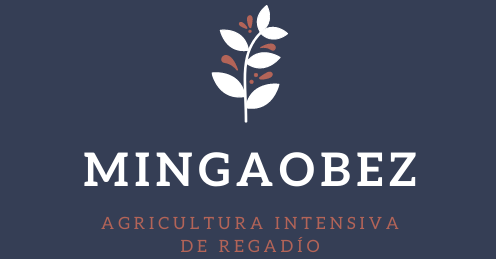Our history
Since the thirties of the last century, we have not stopped investing year after year in improving the agricultural exploitation
In the first half of the 1930s, the transformation took place in Mingaobez from the system of cultivation to the third to that of the year and time.
In the third system, the farm was divided into three sheets (or thirds). Each year a cereal leaf was sown (mostly wheat and some barley); another third was left fallow for the sowing of the following year and the other third was left as pasture for the use of cattle for labor and income; therefore, in the third system, each leaf rested for two years and was sown the other. The third system ensured, on the one hand, the production of wheat, which provided the farmer with the main source of income, and on the other hand, the maintenance of work cattle (barley, straw, and grass), as well as the replacement of said cattle and also the creation of a cattle farm with the base of the third dehesado.
Year and time cultivation consisted of dividing the farm into two sheets: one of them (main sheet) was dedicated to cereal (almost always wheat) and the other to a fallow plant (cotton, corn, broad beans, chick peas, beet, sunflower,...), repeating the process the following year but with the leaves changed.
There are several aspects that until then slowed down the transformation of the cultivation system to the third to that of the year and time:
- Difficulties in placing products on the market (for example, at that time there was no state service that guaranteed the purchase of wheat at a fixed price). This made it less attractive to move to systems like the year and time, more intensive and higher production.
- The need for greater investment to go from one third per year and once
- Complexity of the crop of the year and time compared to the comfort and simplicity of the crop to the third
- Widespread belief that the earth needed long periods of rest
- The need for a balance between agriculture and livestock, which favored the cultivation of one third
- The cultivation to the third facilitated the manuring of the farm when the fertilizers either did not exist or were scarce
- Impossibility of dispensing with animal traction, given the technological level of that time
- Poor development of mechanical traction
Historically – when in Mingaobez it was cultivated to the third that later evolved to the year and time – the cattle constituted a factor of capital importance in the optimization of this alternation and in the contribution of organic matter.
In Mingaobez, oxen were the most suitable working cattle for the deep lands of heavy soils, as opposed to the equine cattle used to till the lighter soils where less power and greater agility were required.
According to oral sources, two yoke of oxen worked approximately one bushel of land a day, a fact that allows one to get an idea of the needs of an agricultural operation like Mingaobez and the spatial demands of its village: number of oxen, proportions of its stable - the tinao or tinahón – and the corresponding haystack, necessary personnel, complementary livestock herd for threshing, hauling, manuring and rental tasks.
The improvement of farming techniques and especially of tools brought with them the gradual substitution of working cattle for mules, displaced later in turn as a result of the mechanization of agricultural work.
In the 1960s, another important milestone occurred when the farm was transformed into irrigated land. In the 1960s, irrigation was carried out from catchments made in the Guadalquivir River (as is the case today), distributing the water to the different plots from a dense network of canals. The farm was perfectly level, which allowed optimal irrigation on foot.
Over the years, the irrigation infrastructure has become more sophisticated to incorporate new technologies that allow a much more efficient use of water as well as energy. The farm currently has a dense underground irrigation network, with hydrants in the different plots that allow optimal sprinkler irrigation. This is especially critical for horticultural crops. We continue to maintain the old network of canals but currently it plays a secondary role as it has been replaced by the underground infrastructure. Woody crops (olive and orange trees) are irrigated by drip.
Over the years, mechanization has greatly reduced the need for labor, especially for harvesting, as the use of harvesters with extraordinary productivity became widespread. In any case, Mingaobez continues to be a very labor-intensive operation since one of our priorities is to create jobs.
Over time we have also evolved to a ZERO inventory policy. We do not store the final products as these, once they are harvested, are loaded onto trucks and shipped directly to the Buyer, who are usually major industrial groups or national and international wholesalers. We do not always close the sale price before shipment to the buyer.
Neither do we practically have inventories of fertilizers or phytosanitary products.
The tractors and tools (fertilizer spreaders, seeders, machinery for the application of phytosanitary products, etc.) are ours. We have our own workshop for the maintenance of our machinery park. The harvesters are generally a service that we have outsourced with trusted suppliers with whom we work regularly.


